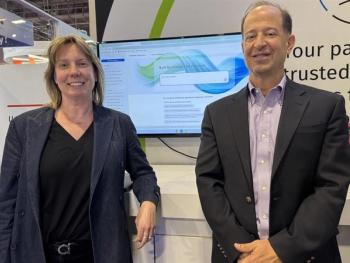
The Rapid Rise of Wearable Technology
Wearable devices can improve patient outcomes and keep patients in the loop about their health data.
The wearable device market is booming and competition has continued to heat up over the last year. Most recently, AT&T announced its LTE-M certified medical wearable, designed to monitor chronically ill and elderly patients who wish to remain at home and age in place. Not to be outdone, Samsung announced that users can download a blood pressure application directly to the Galaxy Watch Active to monitor blood pressure in real-time. With all of these new wearables hitting the market, how can we as healthcare executives and physicians work together to make sure that all of these items are used properly, No. 1, and are used in a way that can enhance and improve care for our patients?
Welcome to The Clinical Divide. I’m Dr. Kevin Campbell, a Duke-trained cardiologist and CEO of the health data startup PaceMate. Every week, this Inside Digital Health™ video series examines healthcare technology and medicine’s top news. I bring the views that help physicians and healthcare executives bridge the clinical divide.
February was a busy month in the world of wearable technology. Apple, which launched its ECG app for the Apple Watch 4 at the end of last year, rolled out a digital health plan that features the ECG reader in an effort to get users to focus on their own heart health. Likewise, AT&T’s smartwatch, OneLife, monitors users 24/7, gives medication reminders and auto prescription refills. It also has a fall detector. It provides data for heart rate, location, movement and sleep. Samsung’s Galaxy wearable line has exercise, sleep and health tracking features to help those seeking a healthier body and mind. Alive Cor, which remains on the cutting edge of innovation in the wearables space, really continues to lead the way with artificial intelligence algorithms for atrial fibrillation and its U.S. Food and Drug Administration-cleared Kardia Band. Alive Cor now has the largest library of wearable ECG tracings in the world.
As the market will only continue to grow, it is really incumbent and essential that as CEOs and physicians, we continue to evaluate and incorporate these devices into our practice when and where appropriate — that’s the rub. It is clear to me that these wearables can improve patient outcomes and certainly can decrease healthcare costs by improving patient engagement and alerting users and their physicians when abnormalities in biometric data are detected. However, it is vital that we continue to support the development of these wearables, and as more and more options enter the marketplace, we have a duty as physicians and CEOs to make sure that patients are well-educated about the benefits and limitations of these new and exciting technologies.
Thank you for joining me for this episode of The Clinical Divide. Until next week, I’m Dr. Kevin Campbell, for Inside Digital Health™.
Navigate the digital transformation with confidence.
More Episodes of The Clinical Divide:







































